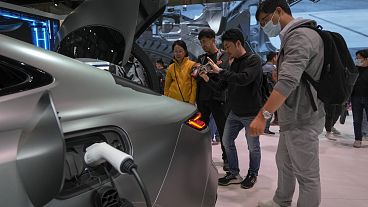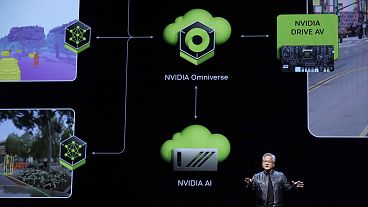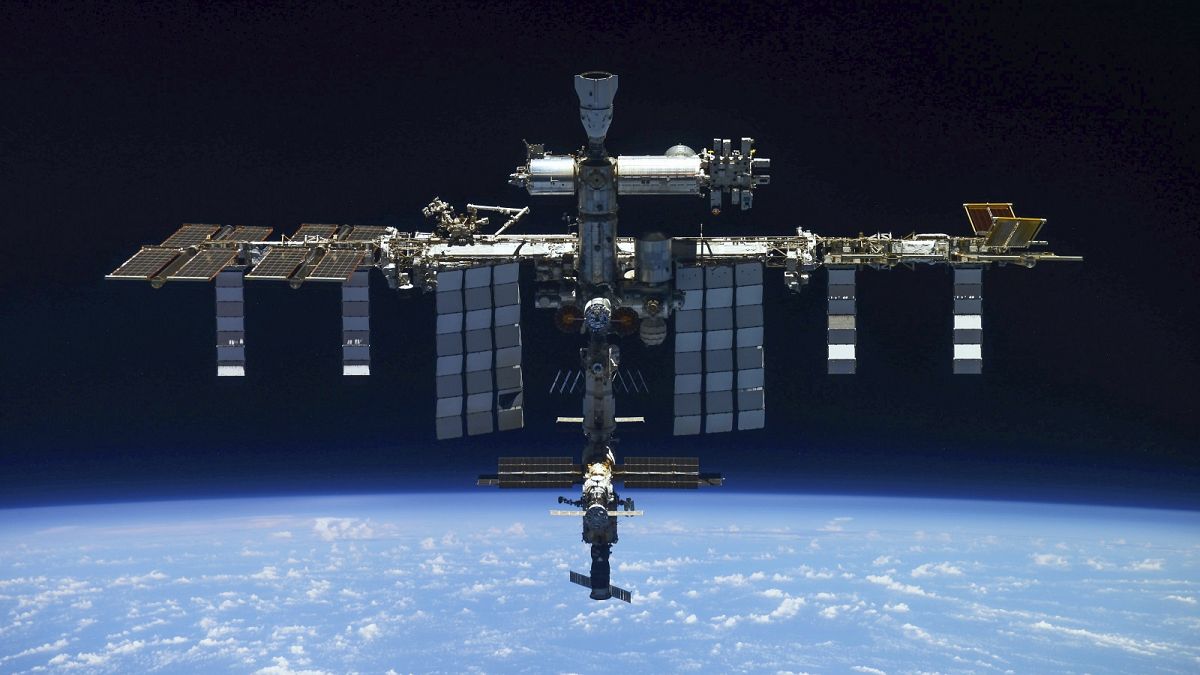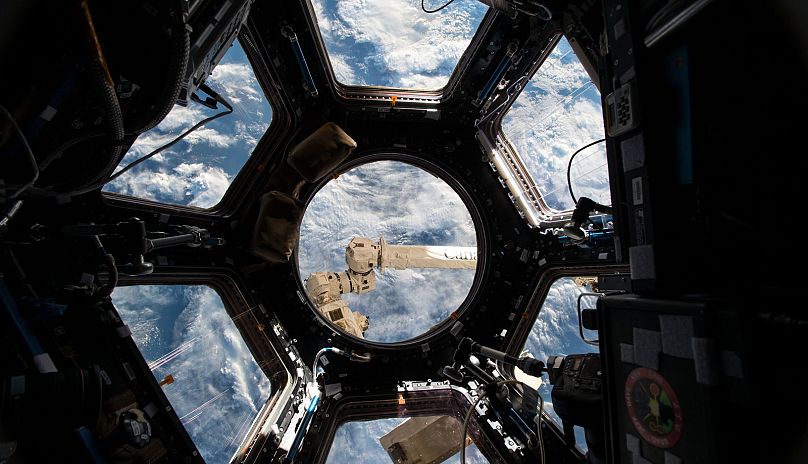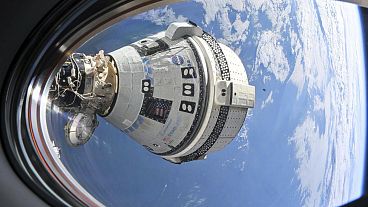The International Space Station (ISS) is starting to show its age. This week, NASA and SpaceX have unveiled their plan for its retirement.
Continuously occupied for just under 24 years, the International Space Station (ISS) is facing retirement. But what form that takes has been debated.
This week, a solution has been decided with SpaceX charged with using a powerful, souped-up capsule to shove the ISS out of orbit once time is up for the sprawling lab.
NASA and Elon Musk’s company on Wednesday outlined the plan to burn the space station up on reentry and plunge what’s left into the ocean, ideally at the beginning of 2031 when it hits the 32-year mark.
The space agency rejected other options, like taking the station apart and bringing everything home or handing the keys to someone else.
NASA gave SpaceX a $843 million (€771 million) contract to bring down the station - the biggest structure ever built off the planet.
This is how the ISS will finally be decommissioned and what challenges lie ahead.
Why get rid of the ISS?
The space station is already showing signs of age.
Russia and the US launched the first pieces in late 1998, and astronauts moved in two years later. Europe and Japan added their own segments, and Canada provided robotic arms.
By the time NASA's shuttles retired in 2011, the station had grown to the size of a football field, with a mass of nearly 430,000 kg.
NASA estimates the station will last until at least 2030. The goal is for private companies to launch their own space stations by then, with NASA serving as one of many customers.
That strategy - already in place for station cargo and crew deliveries - will free NASA up to focus on Moon and travel to Mars. NASA could decide to extend the station's life, too, if no commercial outposts are up there yet.
The aim is to have an overlap so scientific research is not interrupted.
Why not bring the station back to Earth?
NASA considered dismantling the space station and hauling the pieces back to Earth, or letting private companies salvage the parts for their own planned outposts.
But the station was never intended to be taken apart in orbit, according to NASA, and any such effort would be expensive and also risky to the astronauts who would handle the disassembly.
Besides, there's no spacecraft as big as NASA's old shuttles to bring everything down. Another option would be to boost the empty station to a higher, more stable orbit.
But that, too, was dismissed given the logistical issues and the increased risk of space junk.
How will it be brought down?
Visiting spacecraft periodically boost the space station so it remains in an orbit approximately 420 km high. Otherwise, it would keep getting lower and lower until it plunged, uncontrolled, from orbit.
NASA wants to ensure a safe reentry over a remote section of the South Pacific or possibly the Indian Ocean, so that means launching a spacecraft that will dock to the station and steer it toward a watery grave.
NASA expects some denser pieces to survive, ranging in size from a microwave oven to a sedan, in a narrow debris field 2,000 km long.
NASA and its partners considered using three Russian supply ships for the job, but a more robust craft was needed.
The call went out to industry and, in June, SpaceX won the contract for a deorbit vehicle.
What will the deorbit spacecraft look like?
SpaceX plans to use an ordinary Dragon capsule - the kind that carries supplies and astronauts to the space station - but with a much bigger trunk housing a record 46 engines and more than 16,000 kg of fuel.
SpaceX's Sarah Walker said the challenge will be creating a spacecraft powerful enough to guide the space station while resisting the tugs and forces from increased atmospheric drag during final descent.
This spacecraft will require an especially powerful rocket just to get to orbit, according to NASA. The capsule would be launched one and a half years before the station's planned demise. Astronauts still would be aboard as it's gradually lowered.
Six months before the station's destruction, the crew would abandon ship and return home. Once the station is down to about 220 km, the Dragon would bring it down four days later.
Has this been done before?
NASA's first space station, Skylab, came crashing down in 1979, with debris raining down onto Australia and the surrounding Pacific.
The space agency had hoped one of the first space shuttle crews could attach a rocket to control Skylab's descent or boost its orbit. But the shuttle wasn't ready by then, with its first flight not until 1981.
Ground controllers managed to send Skylab into a slow tumble, aiming for the Indian Ocean. But some pieces also landed in Western Australia. Russia has had more experience with incoming space stations.
Mir operated for 15 years before being guided to a fiery reentry over the Pacific in 2001. Before that, several Salyut stations bit the dust.
Will anything be saved?
NASA wants to bring back some small items from inside the space station for museum display, like the ship's bell and logs, panels with patches and other mementos. Those can come down in SpaceX supply ships in the final year or two.
"Unfortunately, we can’t bring home really, really big stuff," said NASA's Ken Bowersox.
"The emotional part of me would love to try and save some," but the most practical approach is to bring everything down in one destructive stroke, he said.

